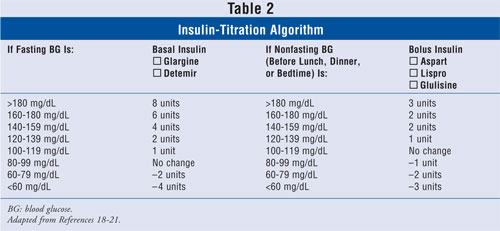
For example, some people might take 1 unit if blood glucose is 50 mg/dL higher than the target, and others might take 1 unit for every 25 mg/dL higher than the target. The correction dose is added to, or subtracted from, the pre-meal insulin dose.

This adjusts or corrects a blood glucose level that may be higher or lower than desired before a meal. The insulin correction factor (sometimes called an insulin sensitivity factor) is used to calculate the amount of insulin you need to bring your blood glucose into target range.

Some people have one ratio for breakfast and a different ratio for lunch and dinner. Additionally, insulin-to-carb ratios may change over the course of your lifetime or even throughout the day. Different people have different insulin-to-carb ratios. Records of what you ate, the estimated amount of carbohydrate in your meal, how much insulin you took, and what your blood glucose was before and two hours after you ate will help you decide if the ratio is correct, or if it should be adjusted. Your health care provider or registered dietitian - who may also be a certified diabetes educator (CDE) - can help you choose a starting ratio however, it may take experimentation before you find the correct insulin-to-carb ratio for you. For example, some people might take 1.5 units for every carb choice, or others might take 1 unit for every 10 grams of carb. It requires a good understanding of your medicines and carbohydrate or “carb” counting.Īn insulin-to-carb ratio helps you dose how much rapid-acting insulin you need to “cover” the carbohydrate you will eat at a meal or snack. Learning to adjust your insulin dose to the amount of food you eat provides flexibility with eating. If you are using background and meal-time insulin therapy (long- acting insulin + rapid-acting insulin or on an insulin pump), you may benefit from using an insulin-to-carbohydrate ratio and a blood glucose correction factor to determine your meal-time insulin dose. This information is provided by Advanced Insulin Management: Using Insulin-to-Carb Ratios and Correction Factors ( from Academy of Nutrition and Dietetics Diabetes Care and Education)
INSULIN UNIT CALCULATOR HOW TO
How to Figure Out Your Insulin-to-Carb Ratio:Ĭalculating the best insulin-to-carb ratio is a process of trial and error:Ĭheck your blood sugar before eating and write down your result.Ĭount your carbs and give your insulin and write down the insulin-to-carb ratio you are using.Ĭheck your blood sugar 2 hours after eating and write down your result.īe sure to talk to your health care provider or certified diabetes educator (CDE) to help you know where to start and then through trial and error you can figure out the right ratio for you. An insulin-to-carb ratio allows you to easily figure out how much of your fast-acting insulin is needed for the amount of carbohydrate you consume. They will also add an additional amount with the ISF if needed.Do you know your Insulin-to-Carb Ratio:If you use fast-acting insulin and count carbohydrates, you want to know your insulin-to-carbohydrate ratio.

They would calculate how many additional carbs (more than usual), then add the insulin to their normal mealtime dose. Another way is for patients who have a fairly standard mealtime insulin dose, but will be eating additional carbs in a meal.

One way is for patients to calculate how many carbs they will eat in a meal, use the ICR to calculate how many units needed to cover the meal, then check BG and add on any additional units of insulin to "correct" the BG back down to goal. The ICR tells us how many grams of carbs are covered by 1 unit of mealtime insulin, while the ISF tells us how much of a blood sugar drop can be expected by 1 unit of mealtime insulin. Here's the 2 primary calculations used in dosing insulin for patients with type 1 diabetes. Insulin Sensitivity Factor (ISF) 1800/TDD = #mg/dL of glucose lowered by 1 unit of rapid-acting insulin Insulin-to-Carb Ratio (ICR) 500/TDD = #g of carbs covered by I unit of rapid-acting insulin Description Insulin Calculations for Type 1 Diabetes


 0 kommentar(er)
0 kommentar(er)
